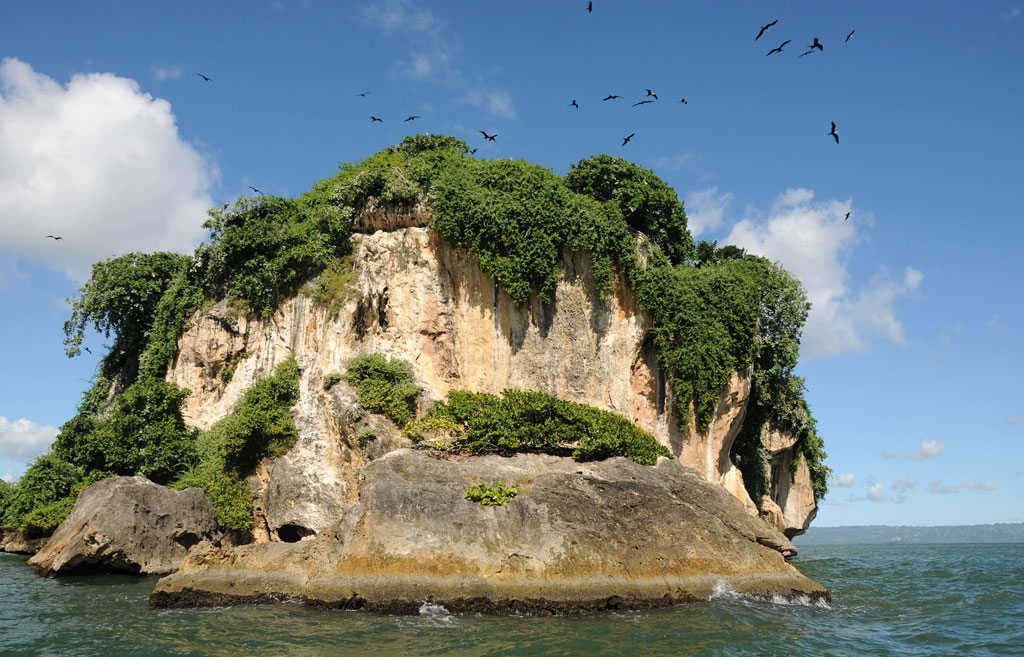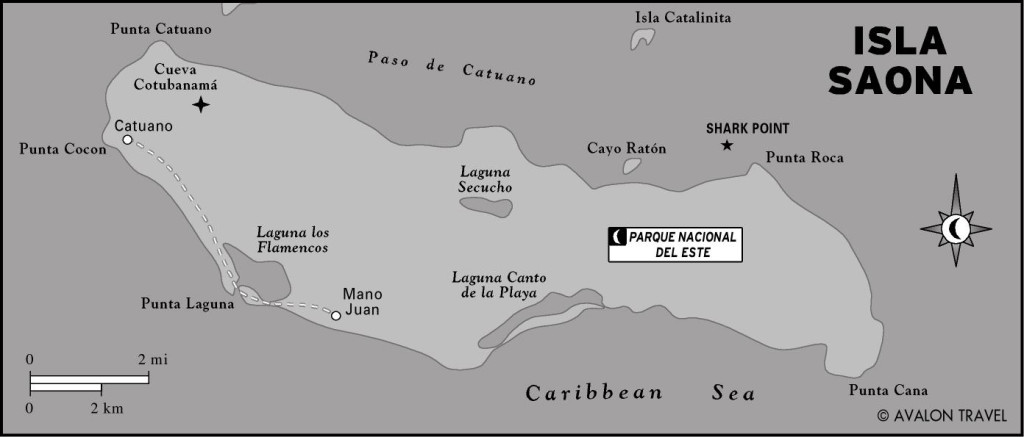
An uninhabited island in Parque Nacional Los Haitises. Photo © Ivan Cholakov/123rf.
In an effort to preserve the ecosystems of the Dominican Republic, 16 national parks, nine natural monuments, and six scientific reserves have been created.In the center of the country, the northern slopes of the Cordillera Central are protected lands of the Parque Nacional Armando Bermúdez, which was founded in 1956 and is home to Pico Duarte at 3,087 meters high. Sliding down the southern slopes is the Parque Nacional José del Carmen Ramírez, founded two years later. Together they were created in an effort to protect the remaining pine forests of the Cordillera Central.
The Parque Nacional Sierra de Bahoruco, in the Southwest, is a forest highland that receives a good deal of rain due to its height compared to the surrounding arid countryside. Almost 52 percent of orchids in the Dominican Republic are found here.
Located on the southern tip of the Península de Pedernales, including the Isla Beata, are the (for the most part) dry forests of Parque Nacional Jaragua. Many bird species (flamingos included!) enjoy the habitat created here by mangroves, beaches, and lagoons along the fringes of this park.
The country’s second smallest park is that of Parque Nacional Isla Cabritos. It is an island in Lago Enriquillo and ranges 4–40 meters below sea level. Perhaps the most fascinating thing about this park is that it has one of the largest populations of the American crocodile and endemic iguanas.
On the eastern shore, tangled in mangroves and swamp land, is the Parque Nacional Los Haitises, which forms the southern coast of the Bahía de Samaná. Here, rock formations jut out into the water and caves are homes to bats.

Isla Saona
Isla Saona and a portion of the southern coast just below San Rafael de Yuma make up the Parque Nacional del Este. The mainland part is made up of limestone terraces and is a dry and hot environment.
In the upper northwest corner of the country is the Parque Nacional Monte Cristi. It comprises a land portion that is subtropical dry forest with cliffs dropping dramatically into the sea (like El Morro at 239 meters above sea level), numerous coastal lagoons, and a collection of small islands (Los Cayos de Siete Hermanos).
Parque Nacional Submarino La Caleta, just east of Santo Domingo, is the country’s smallest national park, weighing in at just 10 square kilometers. Its offshore coral reef (and its shipwreck) gets top billing in this park, which is frequented by divers exploring its marine life.
Excerpted from the Fourth Edition of Moon Dominican Republic.